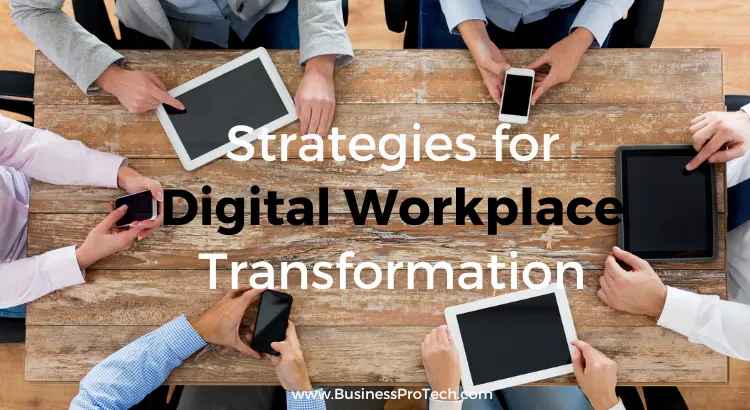As technology continues to break down the boundaries of the traditional office, embracing digital transformation is essential for businesses of all sizes. With innovative tools, improved communication channels, and evolving work structures, the digital workplace has become an inevitable reality.
In this article, we will explore some key strategies to help companies navigate digital workplace transformation while maximizing productivity and employee satisfaction.

Assess Your Digital Maturity
Before diving headfirst into the digital realm, it is important to assess your organization’s digital maturity. Determine where your organization stands in terms of digital tools, remote work culture, employee skills, and overall technology integration. This will help you develop a clear roadmap for what resources and capabilities your organization needs to successfully transition.
Creating a well-defined strategy is crucial in guiding your organization through its digital transformation. Identify your objectives, align them with the overall business goals, and establish a feasible timeline.
A solid strategy will provide direction, maintain focus, and ultimately drive the successful adoption of new digital practices. Identify any issues or areas where your business may be lacking and create a clear plan to tackle these problem areas.
Collaboration and External Help

Effective communication and collaboration are integral to a successful digital work environment. From chat platforms to project management tools, utilize applications that facilitate seamless communication between team members, regardless of their location. Encourage an open and transparent culture so employees feel comfortable sharing ideas and addressing concerns.
Engaging with external professionals who have experience in digital workplace transformation can be beneficial in navigating the complex process. For example, by turning to IT consulting Houston businesses can access valuable guidance on implementing best practices, addressing challenges, and making the most of the latest digital workplace tools and trends.
Empower Employees
Digital transformation is not just about implementing new technologies; it also entails nurturing the necessary skills your employees will need to adapt. Invest in training programs to help your team build relevant technical, analytical, and soft skills. In addition, promote a culture of continuous learning to empower employees to stay ahead of the ever-evolving digital landscape.
With advances in technology, remote work has become a viable, and often preferable, alternative to traditional office environments. To ensure the success of a remote workforce, enable your employees with the right tools, clear guidelines, and a strong support system. Furthermore, cultivate a sense of trust and accountability to maintain productivity. Focus on clear and reliable communication and have plans in place for technical or connection issues.
Security and Optimization
As you transition to a digital workplace, securing your organization’s data becomes more critical than ever. Implement strong cybersecurity protocols and password practices, and invest in robust security software to safeguard your sensitive information. Educate employees on the importance of online safety and how to recognize potential threats.

Analyze your current workflows to identify areas for digital optimization. Automate repetitive tasks, eliminate unnecessary paperwork, and streamline processes to remove bottlenecks and improve efficiency. By optimizing digital processes, you can reduce costs, save time, and enhance overall workplace productivity.
Continuing to Improve
Identify key performance indicators (KPIs) to track the progress of your digital transformation. Regularly collect data and analyze your organization’s performance against these KPIs to gauge the success of your efforts. Be prepared to adjust your strategy and iterate as necessary to achieve your digital workplace objectives.
Adopting a mindset of continuous improvement and innovation will ensure your organization maintains its competitive edge in the digital world. Encourage employees to challenge the status quo, explore new ideas, and embrace change. This fosters a culture that thrives on innovation and propels your digital workplace transformation forward.
Conclusion
A successful digital workplace transformation is built on a strong strategy, collaboration, continuous learning, and adaptability.
By following these key steps, staying on top of new digital innovations, and taking advantage of external expertise, your organization can successfully navigate the shift from traditional office spaces to a digital workplace that not only meets today’s demands but also prepares for the future.